Chimneys, often overlooked but essential components of a home, play a crucial role in keeping our living spaces safe and comfortable. Yet, they are subject to wear and tear over time, requiring regular maintenance and occasional repairs to ensure they function efficiently. In this comprehensive guide, we delve into the importance of chimney repair, common issues that arise, and the steps homeowners can take to address them effectively.
Importance of Chimney Repair: A well-maintained chimney not only enhances the aesthetic appeal of a home but also ensures the safety and efficiency of heating appliances such as fireplaces, wood stoves, and furnaces. Regular chimney inspection and repair are crucial for several reasons:
- Safety: A damaged chimney can pose significant safety hazards, including the risk of fire and the release of toxic gases such as carbon monoxide into the home.
- Structural Integrity: Over time, chimney masonry can deteriorate due to exposure to weather elements, leading to cracks, spalling, or even collapse. Repairing these issues is essential to maintain the structural integrity of the chimney.
- Efficiency: A properly functioning chimney facilitates the efficient flow of smoke and combustion byproducts out of the home, ensuring optimal performance of heating appliances and reducing energy costs.
Common Chimney Issues: Several factors can contribute to chimney deterioration and the need for repair. Some of the most common issues include:
- Creosote Buildup: Creosote, a byproduct of wood combustion, can accumulate inside the chimney lining over time, increasing the risk of chimney fires. Regular cleaning is necessary to remove creosote buildup and reduce the risk of ignition.
- Cracked Masonry: Exposure to moisture and temperature fluctuations can cause the chimney masonry to crack or deteriorate. Cracked bricks or mortar joints compromise the chimney’s structural integrity and should be repaired promptly.
- Chimney Leaks: Water infiltration through the chimney can cause damage to the interior walls, flue liner, and surrounding structures. Common causes of chimney leaks include damaged flashing, cracked chimney crown, or deteriorated chimney cap.
- Flue Blockages: Debris such as leaves, bird nests, or even fallen masonry can obstruct the chimney flue, preventing proper ventilation and increasing the risk of carbon monoxide buildup indoors.
Steps for Chimney Repair: Addressing chimney issues promptly is crucial to prevent further damage and ensure the safety of your home. Here are the essential steps involved in chimney repair:
- Inspection: Begin by scheduling a professional chimney inspection to assess the extent of damage and identify any underlying issues.
- Cleaning: If creosote buildup or debris blockages are detected, the chimney should be thoroughly cleaned using specialized tools and techniques.
- Masonry Repair: Repair any cracks, spalling, or deterioration in the chimney masonry by replacing damaged bricks, repointing mortar joints, or applying waterproofing sealants.
- Flue Repair: If the chimney flue is damaged or compromised, it may need to be relined or repaired to ensure proper ventilation and safety.
- Waterproofing: Apply a waterproofing sealant to the exterior masonry to protect against moisture infiltration and extend the lifespan of the chimney.
- Installation of Chimney Caps and Flashing: Install or replace chimney caps and flashing to prevent water intrusion and keep out debris, birds, and animals.
- Regular Maintenance: Schedule annual chimney inspections and cleaning to identify and address any issues before they escalate into costly repairs.
Conclusion: Chimneys are vital components of residential heating systems, requiring regular maintenance and occasional repairs to ensure safety, efficiency, and longevity. By understanding the importance of chimney repair, recognizing common issues, and following the appropriate steps for maintenance and repair, homeowners can enjoy the warmth and comfort of their homes with peace of mind. Remember, when it comes to chimney repair, prioritizing safety and quality craftsmanship is key.

